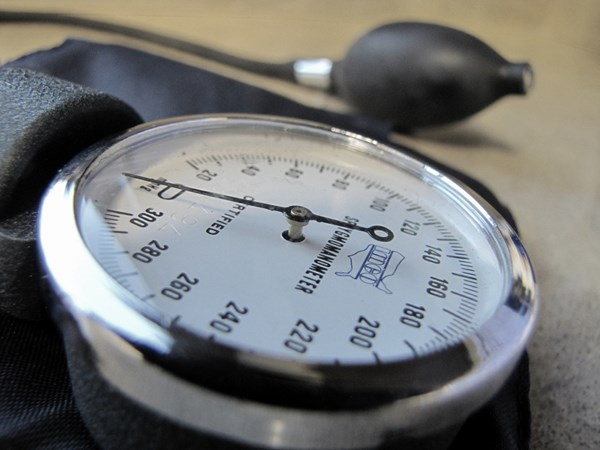This Critical Care Alert from EMRA's Critical Care Division did not appear in the print version of EM Resident Magazine. Learn more at EMRA's Critical Care Division.
Paper: Comparison of Dopamine and Norepinephrine in the Treatment of Shock (NEJM 2010)
Pubmed Link: http://www.ncbi.nlm.nih.gov/pubmed/20200382
CLINICAL SCENARIO
A 66 year-old M with history of hepatitis C, HTN, recent PE on coumadin and Lovenox, presents with altered mental status. Patient was recently discharged to a skilled nursing facility after he was diagnosed with PE. The morning prior to presentation, the patient was noted to have large, grossly bloody bowel movements. Patient arrived in the ER, complaining of abdominal pain, tachypneic, in moderate respiratory distress, pale, and clammy. Vitals in the ED: BP 90/50, HR 130, RR 40, Sat unobtainable, rectal temperature 102F. His blood work shows a lactate of 10.0 mmol/L and WBC of 26,000 with HgB of 10.7. You start by giving the patient 2 units of pRBCs, vitamin K 10mg IV, protamine, 2L IVF, and broad spectrum antibiotics. However, the patient's BP continues to drop, and you decide to proceed with vasopressors. Do you start with dopamine or norepinephrine in this mixed hypovolemic and septic shock patient?
OBJECTIVE
- To examine whether dopamine or norepinephrine is the better first-line vasopressor agent in the treatment of shock, in order to reduce the rate of death among patients in shock.
BACKGROUND
- In circulatory shock, we frequently have to proceed with vasopressor agents to supplement patient's perfusion status. Traditionally, both dopamine and norepinephrine have been recommended as the first-line vasopressor agents.
- Dopamine and norepinephrine have different effects on the kidneys, splanchnic region, and pituitary axis, but there have been no formal studies to show the clinical difference between these two agents.
- There have been multiple observational studies, such as the Sepsis Occurrence in Acutely Ill Patients (SOAP) study, which have showed that the administration of dopamine was an independent risk factor for death in the ICU.
DESIGN
- Multicenter, randomized trial between December 2003 and October 2007, in 8 centers in Belgium, Austria, and Spain.
- Study period lasted a maximum of 28 days.
- Inclusion criteria: 18 years or older in whom a vasopressor agent was required for the treatment of shock .
- Patient was considered to be in shock if the MAP < 70 mmHg or SBP < 100 mmHg (despite adequate fluid resuscitation) or if the patient had signs of tissue hypoperfusion (AMS, mottled skin, decreased urine output, elevated lactate).
- Exclusion criteria: patients younger than 18 years old, patients who had already received a vasopressor agent for more than 4 hours during current episode of shock, patients who had serious arrhythmia, and patients who had been declared brain-dead.
- Patients were randomized to two groups: dopamine and norepinephrine (doctors and nurses administering the drugs, local investigators, and research personnel were blinded. If the patient was hypotensive after the maximum dose of either agent had been administered, open-label norepinephrine was added.
KEY RESULTS
- Primary end point: rate of death at 28 days
- Secondary end points: rates of death in the ICU, rates of death in the hospital, rates of death at 6 months, rates of death at 12 months, duration of stay in the ICU, number of days without need for organ support, time to attainment of hemodynamic stability, changes in hemodynamic variables, and the use of other inotropic agents.
- Adverse events: arrhythmias, myocardial necrosis, skin necrosis, ischemia in distal extremities, or secondary infections.
- The study used an intention-to-treat analysis.
- A total of 1679 patients were enrolled, 858 in the dopamine group and 821 in the norepinephrine group.
- Rate of death at 28 days in this study was close to 50%.
- 98.6% follow-up to day 28; 85.9% follow-up to 6 months; 61.7% follow-up to 12 months.
- There were no significant differences between the groups in the rate of death at 28 days (52.5% in the dopamine group and 48.5% in the norepinephrine group), or in the rates of death in the ICU, in the hospital, at 6 months, or at 12 months.
- The overall effect of treatment did not differ significantly among subgroups divided according to the type of shock.
- Overall, 309 patients (18.4%) had an arrhythmia (most common was atrial fibrillation).
- There were more arrhythmic events among patients treated with dopamine (24.1%) than among those treated with norepinephrine (12.4%).
- Dopamine was associated with an increased rate of death at 28 days in patients with cardiogenic shock.
- The study drug was discontinued in 65 patients owing to severe arrhythmias (6.1% in dopamine group and 1.6% in norepinephrine group).
- There were no significant differences between the groups in the incidences of other adverse events.
CONCLUSIONS
- There was no significant difference in the rate of death at 28 days between patients with shock who were treated with dopamine as the first-line vasopressor agent compared with those who were treated with norepinephrine.
- The use of dopamine was associated with a greater number of arrhythmic events, and some were severe enough to require withdrawal from the study.
- This study included patients who were treated for all different shock states, which gives it a high external validity.
- One of the limitations of this study is that dopamine is a less potent vasoconstrictor than norepinephrine, but the infusion rates were roughly equipotent.



